Step confidently into the world of barefoot shoes with Xero Shoes, where you will experience a revolutionary approach to minimalist footwear. Your journey begins with the understanding that gradual transition is vital to avoid foot and muscle strain. Think of this process as akin to training wheels for your feet—start slowly, build your strength, and embrace the natural movement your body craves. By choosing Xero Shoes, you are not only selecting footwear; you are investing in a biomechanically sound method of walking and running that reconnects you with your body’s innate movement patterns. This detailed guide is tailored to assist everyone, from athletes to casual walkers, ensuring a safe and effective transition.
Uncover the Core Philosophy of Barefoot Footwear
Before diving deeper into Xero Shoes, it’s essential to understand the foundational philosophy behind barefoot footwear. Barefoot shoes signify a transformative shift away from traditional cushioned footwear, designed to replicate the natural movement and sensory experience of walking barefoot. They allow your feet to function in harmony with nature, reducing interference between your feet and the ground, which promotes a healthier and more authentic walking experience.
Understanding the Definition of Barefoot Shoes
Barefoot shoes are minimalist footwear specifically engineered to replicate the feeling of walking or running barefoot while providing protection against various surface elements. These shoes are equipped with ultra-thin soles, a zero heel-to-toe drop, and a roomy toe box that permits your toes to spread comfortably, thereby enhancing balance and optimizing foot mechanics.
Delving into the Benefits of Barefoot Walking and Running
In contrast to conventional footwear norms, barefoot-style shoes offer significant biomechanical advantages. They encourage natural foot positioning, enhance the strength of intrinsic foot muscles, improve proprioception, and may reduce the risk of injuries commonly associated with traditional supportive footwear.
Additionally, a fascinating aspect of barefoot walking and running is the potential for enhanced sensory feedback and improved overall foot health. Allowing your feet to move freely fosters stronger foot muscles, better arch support, and increased flexibility. This approach may also rectify improper movement patterns and alleviate chronic pain associated with poor foot mechanics.
Getting to Know Xero Shoes: A Premier Minimalist Footwear Brand
Before we discuss the specifics of Xero Shoes, it’s important to acknowledge them as a leading brand in minimalist, barefoot-inspired footwear. Established by individuals passionate about natural movement, Xero Shoes offers a diverse array of products that are designed to protect your feet while ensuring maximum sensory connection with the ground.
Xero Shoes stands out not only for its foundational philosophy but also for its innovative designs and unwavering commitment to the principles of natural movement. Their product line spans everything from lightweight running shoes to casual everyday wear, all meticulously crafted to support your foot’s natural biomechanics and promote a more authentic experience while walking and running.
The Vital Role of Gradual Transition in Footwear Change
Transitioning to barefoot shoes necessitates careful planning to avoid undue strain on your body. When switching to Xero Shoes, it’s crucial for your feet and muscles to adjust to a more natural movement pattern. Gradual adaptation is essential to prevent injuries and allows your body to develop the strength and flexibility necessary for minimalist footwear.
The Risks of Sudden Changes in Footwear
Making an abrupt switch to barefoot running shoes can lead to injuries such as stress fractures, tendonitis, and muscle strains. Your body has become accustomed to traditional supportive footwear, and an immediate transition can shock your musculoskeletal system.
Recognizing Muscle Activation and Initial Discomfort
Introducing Xero Shoes into your routine activates muscle groups in your feet and legs that may have been dormant. You may experience new sensations as previously inactive muscles engage, which can lead to initial discomfort and mild soreness as your body adapts.
Understanding Muscle Activation and Soreness in Depth
As your muscles reactivate, temporary discomfort in areas such as your calves, Achilles tendon, and foot arches is common. Your body is learning to move in a more natural manner, engaging stabilizing muscles that traditional shoes often suppress.
The Importance of Allowing Adequate Adaptation Time
Every successful barefoot shoe transition relies on a strategic approach to adaptation. Patience and mindfulness are essential as you enable your body to adjust to the new biomechanical demands of minimalist footwear.
The Extended Significance of Adaptation Time
This adjustment period is critical for establishing correct movement patterns and enhancing foot strength. With the regular use of Xero Shoes, your body will recalibrate gradually, improving proprioception and refining your natural gait mechanics.
Fundamental Biomechanical Concepts for Footwear Transition
Your understanding of biomechanics is crucial when evaluating barefoot shoe technology. Biomechanics examines how your body moves, focusing on the intricate interactions between muscles, bones, and joints during physical activity. By grasping these principles, you can gain insight into how minimalist footwear can potentially transform your movement patterns and overall physical performance.
The Significance of Natural Foot Movement
As you investigate barefoot shoe mechanics, the notion of natural foot movement becomes paramount. Your feet are constructed with a complex array of muscular and skeletal structures that allow for dynamic, adaptive motion when unencumbered by conventional rigid footwear. Xero Shoes promote this biomechanical freedom, enabling your feet to function as nature intended.
The Impact on Joint Health During Transition
Mitigating joint stress is a critical consideration when transitioning to minimalist footwear. Your body’s natural shock absorption capabilities can be improved through more responsive foot mechanics, potentially alleviating long-term joint strain linked to typical shoe designs.
It is essential to recognize that barefoot shoe transition requires a gradual adaptation process. Your joints will undergo significant biomechanical recalibration, with potential benefits including enhanced proprioception, reduced impact forces, and improved weight distribution. By encouraging natural alignment, these shoes can help decrease cumulative stress on your knees, hips, and lower back.

The Importance of Foot Strength and Flexibility in Movement
The engagement of foot muscles is what differentiates minimalist footwear from traditional shoes. Your foot muscles become increasingly active, gaining strength through enhanced sensory feedback and unrestricted movement patterns.
Furthermore, enhancing foot strength represents a holistic approach to lower limb wellness. Your intrinsic foot muscles, often weakened by conventional footwear, can be progressively rehabilitated. Barefoot shoe technology encourages natural muscle activation, potentially improving balance, proprioception, and overall biomechanical efficiency in the lower extremities.
A Detailed 3-Phase Transition Plan Over 12 Weeks
To effectively transition to Xero Shoes, implementing a structured 12-week plan is crucial. This approach gradually acclimates your feet and body to barefoot shoe mechanics, assisting in building foot strength, enhancing biomechanics, and minimizing discomfort throughout your minimalist footwear journey.
Phase 1 (Weeks 1–4): Introducing Minimal Footwear Principles
The transition process begins by evaluating your current foot condition and integrating minimal footwear principles. Start wearing Xero Shoes for brief sessions indoors, perform gentle foot-strengthening exercises, and allow your body to adjust to the new sensory feedback provided by the zero-drop, wide toe box design.
Phase 2 (Weeks 5–8): Expanding Your Exposure to Minimalist Footwear
The second phase involves increasing your exposure to barefoot shoes and assessing your foot’s adaptability. Gradually extend the duration you wear the shoes, initiate light outdoor walking, and focus on cultivating natural foot mechanics.
This phase is critical for adaptation as your muscles, tendons, and proprioceptive systems recalibrate. You will likely notice enhanced foot flexibility, improved balance, and a more natural gait pattern as your body learns to move without the constraints imposed by traditional shoes.
Phase 3 (Weeks 9–12): Fully Integrating Minimalist Footwear into Daily Activities
In this final phase, you’ll incorporate Xero Shoes into most of your daily routines, experiencing increased foot strength and movement efficiency. Your feet will have developed considerable resilience and adaptability to minimalist footwear.
As a result of consistent training, you will observe improved foot biomechanics, a decreased risk of injury, and a more instinctive connection with various ground surfaces. The barefoot shoe transition evolves from a deliberate process into a seamless, enjoyable experience.
Crucial Strengthening Exercises for a Smooth Transition
The Necessity of Conditioning Your Feet
Transitioning to barefoot shoes requires a gradual adaptation of your foot muscles. Having been confined in conventional shoes, your intrinsic muscles have likely weakened. By slowly introducing minimalist footwear, you will rebuild natural foot strength and proprioception, effectively preventing injuries during the transition.
Recommended Foot Conditioning Exercises for Stronger Feet
An effective regimen comprises exercises such as toe spreads, heel raises, arch lifts, and barefoot walking. Barefoot mobility drills will enhance your foot flexibility and strengthen the dormant muscles that traditional shoes often neglect. Focus on deliberate, controlled movements to maximize muscle engagement.
Moreover, a comprehensive exercise routine should target specific intrinsic foot muscles through activities like marble pickup, towel scrunches, and balance exercises on unstable surfaces. These exercises can significantly enhance foot strength and neuromuscular control, preparing you for minimalist footwear.
Optimal Timing and Frequency for Achieving Maximum Results
Engaging in approximately 15-20 minutes of targeted foot exercises, 3-4 times a week, will yield significant improvements in foot strength. Begin with gentle movements and gradually increase intensity as your foot strength develops. Consistency is crucial in your barefoot shoe adaptation journey.
Alongside structured exercises, integrating barefoot activities such as walking on various surfaces, practicing yoga, and gentle stretching will expedite your foot conditioning. You will likely notice enhancements in balance, flexibility, and natural foot mechanics as you progress through your transition to minimalist footwear.
Confronting Common Challenges During Your Transition
The shift to Xero Shoes barefoot footwear may not always proceed smoothly. You could encounter initial challenges that test your resolve, but understanding these hurdles will prepare you for a successful adaptation. Your body needs time to adjust to a more natural walking and running experience, making patience and gradual progression key to overcoming discomfort and enhancing foot strength and mobility.
Addressing Calf Tightness and Remedies for Relief
A common challenge during the transition to minimalist shoes is calf tightness due to altered muscle engagement. To assist your muscles in adjusting to the new biomechanical demands, integrate gentle stretching, foam rolling, and gradually increase your walking distances.
Strategies for Managing Foot Fatigue During the Transition
As you navigate the transition, foot fatigue may arise as your intrinsic foot muscles strengthen. Begin with short walks, gradually increasing duration, and consider alternating between traditional and barefoot shoes during the initial weeks.
Overcoming challenges in foot adaptation requires a strategic approach. You should progressively build foot strength through specific exercises like toe spreads, arch lifts, and barefoot walking on varied surfaces. Listening to your body’s signals and avoiding overexertion will foster resilience and aid in injury prevention.
Addressing Skin Sensitivity and Implementing Proper Care
Alongside muscle adaptation, you may experience skin sensitivity when transitioning to thinner, more flexible footwear. Utilizing moisture-wicking socks and gradually exposing your feet to diverse textures and terrains can be beneficial.
Furthermore, maintaining proper skin care is crucial during your barefoot shoe journey. Monitor your feet for hotspots, blisters, or unusual wear patterns, employing natural moisturizers and allowing adequate recovery time between extended wear sessions. Proper foot hygiene and gradual exposure will contribute significantly to developing robust, resilient feet.
Understanding Foot Biomechanics for Optimal Shoe Choices
Many traditional shoe designs fundamentally misinterpret how human feet naturally function. By exploring foot biomechanics, you will uncover how your feet are designed to move, flex, and absorb impact with remarkable sophistication. Grasping these intricate mechanisms helps you appreciate why minimalist barefoot shoes like Xero can redefine your walking and running experiences.
The Natural Structure and Function of the Foot
At the core of foot biomechanics is a complex network of 26 bones, 33 joints, and over 100 muscles, tendons, and ligaments. These interconnected structures are optimized for dynamic movement, providing stability, shock absorption, and propulsion. When allowed to function naturally, your feet can adapt, strengthen, and support your body’s kinetic chain effectively.
The Consequences of Traditional Footwear Designs
Most conventional shoes are crafted in a manner that restricts natural foot movement. Thick cushioning, narrow toe boxes, and rigid soles fundamentally alter your foot’s biomechanical potential. These designs can weaken foot muscles, diminish sensory feedback, and create artificial movement patterns that disconnect you from your body’s natural walking and running mechanics.
Even more concerning is how traditional footwear can lead to long-term structural changes in your feet. Extended use of restrictive shoes can result in muscle atrophy, decreased toe flexibility, and altered arch dynamics. The padding and support paradoxically weaken the very structures they aim to protect, perpetuating a dependency cycle on increasingly supportive footwear.
The Implications for Running and Walking Efficiency
A key revelation in foot biomechanics is how natural movement impacts your entire kinetic chain. Allowing your feet to move authentically engages more muscle groups, enhances proprioception, and may lower injury risks tied to unnatural movement patterns.
The effects of transitioning to minimalist footwear extend beyond just your feet. Enhanced biomechanical alignment can positively influence your posture, reduce joint stress, and improve overall movement efficiency. By gradually retraining your feet and lower body, you are rewiring your movement patterns to be more natural, responsive, and biomechanically intelligent.
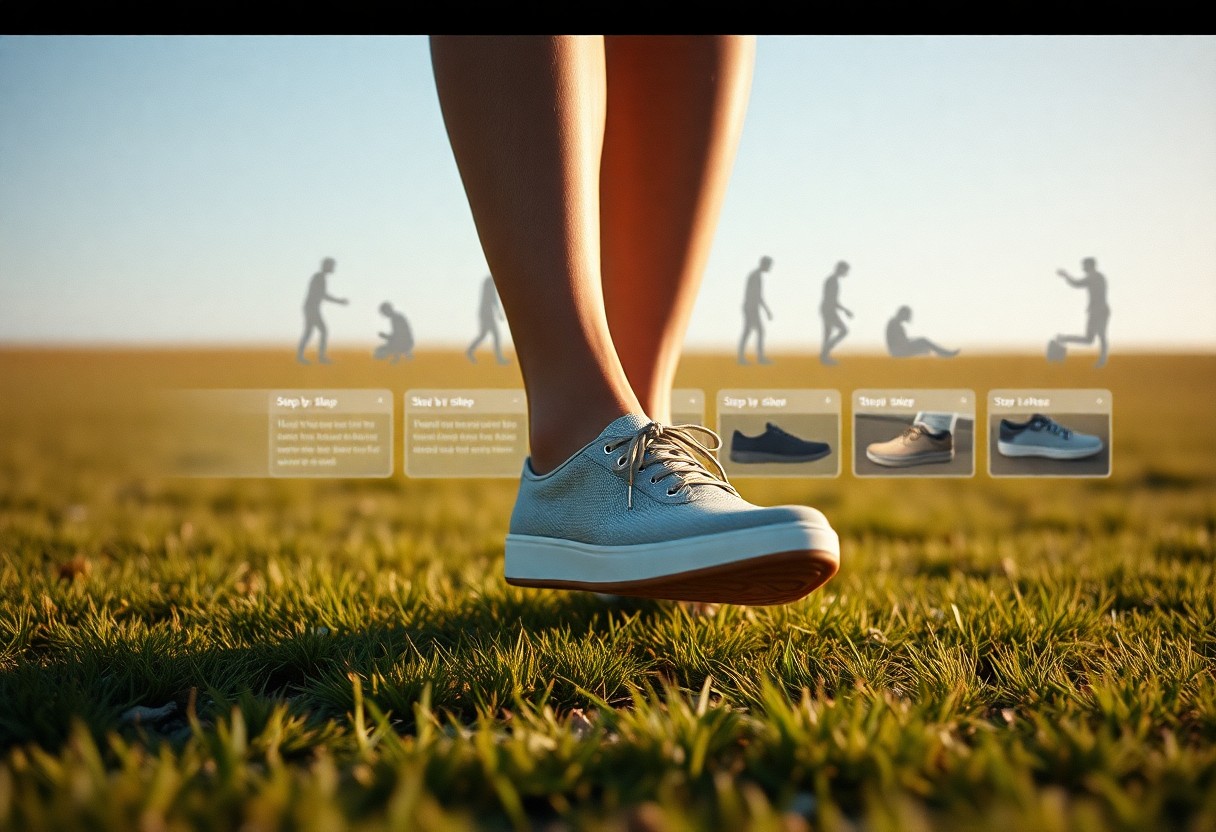
Choosing the Perfect Xero Shoes for Your Unique Needs
While there are countless barefoot footwear options on the market, Xero Shoes offers a unique take on minimalist running and walking. Your journey begins with understanding their diverse lineup and pinpointing the ideal pair tailored to your specific needs and activity levels. These lightweight, flexible shoes are designed to emulate natural foot movement, providing an authentic barefoot experience while protecting your feet from rugged terrain.
Discovering Different Models and Their Distinct Features
The Xero Shoes collection includes a variety of models from trail runners to casual everyday wear, each designed with a zero-drop design and ultra-thin soles. The Prio model excels in cross-training, while the TerraFlex is optimized for superior trail performance. Every shoe integrates barefoot technology that allows maximum foot flexibility and sensory feedback during movement.
Key Considerations for Beginners in Minimalist Footwear
When transitioning to Xero Shoes, keep in mind the following essential considerations:
- Evaluation of foot strength
- Your current fitness level
- Terrain for running/walking
- Your personal comfort preferences
- The type of intended activity
Your ultimate goal is to discover a shoe that effectively supports your natural biomechanics.
Exploring Customization Options for a Personalized Fit
Each model of Xero Shoes can be tailored to enhance your barefoot experience. You can adjust lacing techniques, select different insole thicknesses, and choose color variations that resonate with your individual style while ensuring optimal foot function.
Real-Life Transformations: Success Stories from Xero Shoes Users
Through numerous personal journeys, we have uncovered inspiring transformations from individuals who have successfully transitioned to barefoot shoes. These narratives showcase the potential benefits of Xero Shoes, illustrating how gradual adaptation and proper techniques can yield improved foot strength, natural movement, and overall comfort. Each story offers valuable insights into the transformative potential of minimalist footwear.
Case Study 1: A Beginner’s Inspiring Journey
With unwavering determination, Sarah, a recreational runner, embraced her transition to Xero Shoes. She began with short walks, slowly increasing her barefoot training duration. Her foot muscles gained strength, and she enjoyed enhanced proprioception and reduced joint stress during her running sessions.
Case Study 2: Overcoming Common Obstacles
The road to barefoot running is not without challenges. Mike faced initial discomfort and muscle soreness but persisted through strategic adaptation. He gradually increased his mileage while concentrating on proper running techniques.
Adapting to minimalist footwear requires time. Mike incorporated specific strengthening exercises, utilized transitional shoes with minimal cushioning, and tuned in to his body’s signals. Guidance from a running coach enabled him to refine his technique and prevent potential injuries.
Insights from Long-Term Users of Xero Shoes
Within the barefoot running community, seasoned users consistently report significant biomechanical improvements. They emphasize the importance of patience and gradual adaptation when transitioning to minimalist footwear.
Case studies reveal that long-term users of Xero Shoes benefit from enhanced foot mechanics, a lowered risk of injury, and improved overall performance. Natural foot movement becomes instinctive, allowing users to feel more connected to their environment during physical activities.
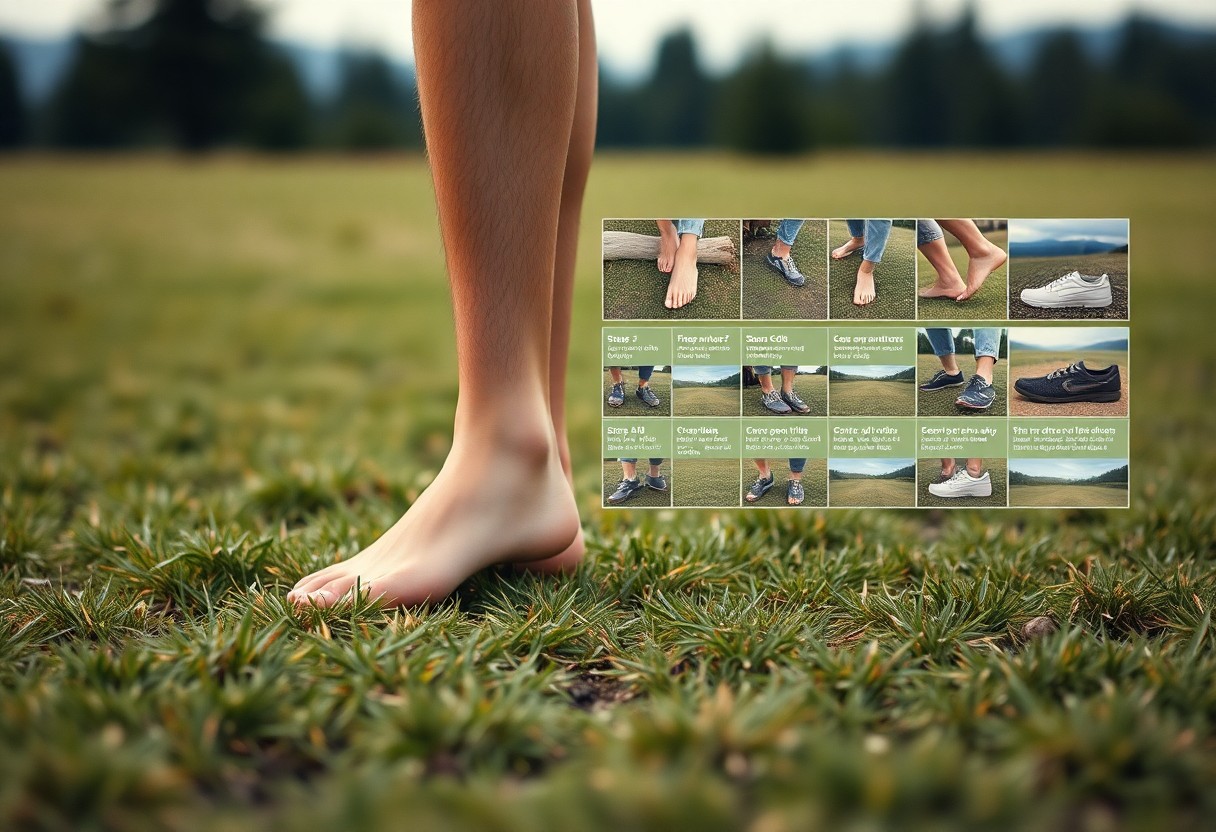
Contrasting Barefoot Shoes with Traditional Footwear: A Comparative Analysis
All barefoot shoes sharply contrast traditional footwear, providing a revolutionary perspective on foot mechanics and movement. To illustrate these differences, here’s a comparative analysis:
| Traditional Shoes | Xero Barefoot Shoes |
|---|---|
| Thick cushioned soles | Minimalist, thin flexible soles |
| Structured arch support | Encourages natural foot movement |
Distinct Key Differences in Design and Functionality
Upon examining barefoot shoes, you’ll discover their radical design philosophy emphasizes natural foot mechanics over conventional cushioning. These shoes mimic the experience of barefoot walking, allowing your feet to flex and move freely, engaging muscles that are often suppressed by rigid footwear.
Performance Insights from Embracing Minimalist Footwear
Contrary to traditional expectations, barefoot shoes provide enhanced proprioception and improved ground connectivity. You will experience better balance, strengthened foot muscles, and a more responsive walking and running experience.
When assessing performance metrics, barefoot shoes offer remarkable biomechanical advantages. They promote natural alignment, reduce impact forces, and encourage a more efficient stride pattern, which may lower injury risks.
Long-Term Advantages of Adopting Barefoot Shoes
Transitioning to barefoot shoes can lead to substantial physiological adaptations. You will develop stronger intrinsic foot muscles, improved posture, and potentially alleviate chronic pain associated with conventional footwear.
Ultimately, barefoot shoes symbolize much more than simple footwear—they represent a comprehensive approach to foot health and movement optimization. By gradually adapting, you will unlock your body’s natural biomechanical potential, experiencing enhanced mobility and minimized structural stress.
Frequently Asked Questions Regarding Your Transition to Xero Shoes
This section addresses your most pressing inquiries about the transition to barefoot shoes, guiding you through the process with clarity and practical insights into adapting to Xero Shoes’ minimalist design while understanding the biomechanical changes you will encounter.
What is the typical timeline for complete adaptation?
The adaptation timeline varies for each individual. Most barefoot shoe enthusiasts find their feet strengthen and adapt within 4-8 weeks, influenced by factors such as current foot strength, walking habits, and commitment to gradual progression.
How can I recognize signs of progress during the transition?
In addition to enhanced foot flexibility and increased sensory awareness, you will likely notice improved muscle engagement and a more natural walking stride as your body acclimates to minimalist footwear.
A comprehensive progression includes developing stronger foot muscles, experiencing reduced joint stress, improved proprioception, and a more connected movement pattern that reflects natural human locomotion.
Are there any risks associated with the transition?
By being aware of potential challenges, you can mitigate associated risks. Initial discomfort, muscle soreness, and temporary foot fatigue are normal as you adapt to barefoot shoes.
Recognizing that potential risks include temporary muscle strain, possible arch discomfort, and the necessity for gradual strength building is essential. Consulting with a healthcare professional and adhering to a structured transition plan can significantly aid in minimizing these challenges.
Here’s the content for the chapter and subsections:
Expert Tips for a Successful Transition to Minimalist Footwear
Successfully transitioning to Xero Shoes necessitates careful planning and execution. Your journey involves understanding several key principles:
- Start with gradual adaptation
- Pay attention to your body’s signals
- Progress incrementally
- Maintain proper barefoot walking technique
Your transition success hinges on patience and a mindful approach to minimalist footwear.
Listening to Your Body During the Adaptation Process
To understand your feet’s adaptation process, be attentive to muscle sensations, potential discomfort, and gradual strength development. Your barefoot shoes will engage muscle groups in novel ways, necessitating careful monitoring and responsive adjustments.
Maintaining Consistency for Effective Results
To effectively integrate Xero Shoes, establish a structured wearing schedule that progressively increases the duration and intensity of your barefoot experiences.
Consistent practice will transform your walking mechanics, muscle engagement, and overall biomechanical efficiency. Your dedication to daily wear will foster neurological and muscular adaptation, enhancing natural foot movement and proprioception.
Building a Supportive Community of Barefoot Enthusiasts
Connecting with fellow barefoot walking enthusiasts is invaluable. Seek online forums, local groups, and professional guidance to share experiences and gain inspiration.
Support networks can provide essential insights, technical advice, and emotional encouragement throughout your minimalist footwear transition. Engaging with experienced practitioners normalizes challenges and accelerates your learning curve.
The Importance of Footwear in Your Overall Health and Well-Being
Your choice of footwear is not just a fashion statement; it plays a crucial role in your holistic health ecosystem. Xero Shoes signify a paradigm shift in understanding how your feet interact with the ground, providing a natural, biomechanically aligned approach to movement. Selecting minimalist footwear is a proactive decision regarding your body’s fundamental mechanics and long-term physical health.
Long-Term Health Benefits of Choosing Minimalist Footwear
Across the spectrum of physical wellness, barefoot shoes like Xero can have a profound impact on your musculoskeletal health. They promote natural foot mechanics, enhance intrinsic foot muscle strength, and improve posture. By allowing your feet to move as intended, you invest in a future characterized by reduced joint stress and enhanced biomechanical efficiency.
Psychological and Emotional Gains from Proper Footwear Choices
In contrast to conventional footwear narratives, the choice of shoes significantly influences your psychological well-being. Minimalist footwear fosters a deeper connection with your environment, creating a sensory feedback loop that enhances proprioception and overall body awareness.
Furthermore, the psychological benefits extend beyond mere physical sensation. Wearing Xero Shoes can boost your confidence, knowing that you are making a progressive health choice. The minimalist design fosters a sense of freedom, alleviating the mental constraints imposed by traditional, restrictive footwear. You will cultivate increased mindfulness with each step, feeling more grounded and attuned to your body’s natural movements.
Embracing a Transformative Lifestyle and Community
Within the barefoot and minimalist shoe community exists a transformative lifestyle movement. Xero Shoes are more than just footwear; they represent a gateway to a more intentional, health-conscious lifestyle that prioritizes natural movement and holistic well-being.
This lifestyle change transcends footwear. By adopting Xero Shoes, you join a global community of individuals committed to challenging conventional health paradigms. You will find yourself increasingly aware of movement, nutrition, and overall wellness, creating a ripple effect that influences your health and inspires those around you to reconsider their approach to physical fitness and comfort.
Final Reflections on Your Transition Journey to Minimalist Footwear
As you reflect on all the points discussed, your embarkation into Xero Shoes signifies more than merely selecting footwear—it is a journey toward embracing natural movement and enhancing foot strength. View the transition as training wheels for your feet—begin slowly, build strength, and attune yourself to your body’s signals. By following this guide, you will progressively adapt to barefoot shoes, reducing discomfort and maximizing biomechanical benefits. Your commitment to mastering proper techniques, gradual adaptation, and mindful walking will dramatically transform your experience with minimalist footwear. Embrace the journey, trust your instincts, and celebrate the newfound connection between your feet and the earth beneath you.
The Article Transitioning to Xero Shoes: A Beginner’s Step-by-Step Guide (2025) appeared first on My Shoes Finder
The Article Xero Shoes: A Step-by-Step Guide for Beginners (2025) Was Found On https://limitsofstrategy.com
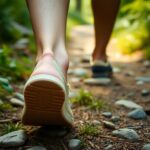
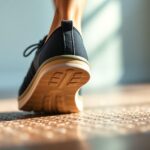
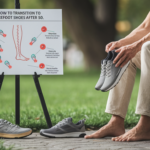
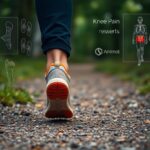
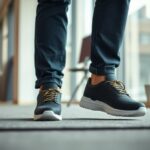
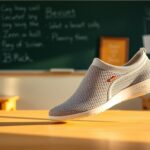


Ah, the world of barefoot shoes! It almost feels like I’m reading the latest chapter of a minimalist foot revolution—it’s a bit like “Footless and Fancy Free.” I appreciate how you liken the transition to training wheels. It’s true, and let’s be honest: my feet might as well have been riding a tricycle while I was lugging around in those clunky traditional shoes! The idea that we need to give our feet time to adjust to their new-found freedom is like trying to convince a cat that a bath is a good idea—good luck with that!